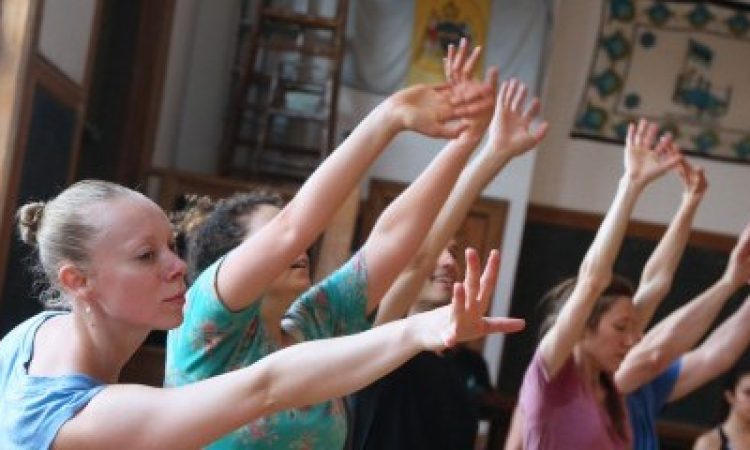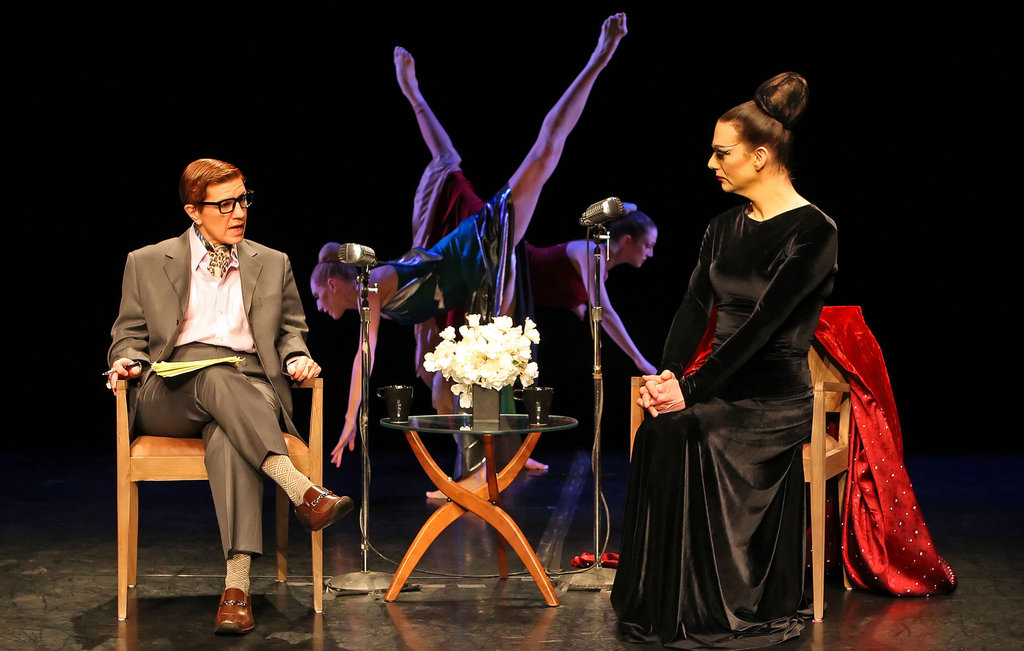Dance, the ultimate ephemeral art, is hard to pin down even when it is choreographed and potentially recorded by critics and/or theorists. When dance is improvised, it can be even more elusive. This is why Group Motion’s new handbook, Group Motion in Practice, detailing the improvisational structures that they have been developing and honing for fifty years, has been such an important undertaking. I danced with Group Motion Dance Company in Philadelphia (2009-2013), and know firsthand that what may occur while performing these improvised scores is unknown, and what happens in a workshop setting is rarely recorded. The scores, now published for the first time in book form, serve as blueprints for danced explorations that can be performed by any group of people who are willing to give themselves the time and space to play (which is shown through this book to be important and necessary human work).
Before diving into the scores, or “game structures,” the book opens with an introduction to the history of the Group Motion workshop and company practices, and of Brigitta Herrmann and Manfred Fischbeck (co-founders) themselves. Brigitta, who studied dance improvisation with the great Mary Wigman in Germany, says that learning dance technique through improvisation “conveyed to me what dance is truly about: dance as language, as direct possibility to access inner realities spontaneously, as a medium of the moment.” Manfred came to dance later, but was drawn to improvisation as an actor through the improvised performances of The Living Theater in Berlin. These histories provide needed context, and include personal reflections about the way that dancing freely influences the daily lives and philosophies of these choreographers.
The book moves through a few different voices (and writing styles) throughout–any sections by Manfred and Brigitta are headed with their names–and some sections are not credited. At times, I would have preferred that the authorship was more shared, which would prevent the repetition of ideas without further elaboration. There are also a few sections that seem to brush over important topics that could be explored in more depth, including Group Motion’s ongoing relationship with technology, and with dance as activism. Though conversational and a bit blog-like, these sections show that there is potential for more research and writing to be done.
The book’s style mirrors Group Motion’s style of improvisation: intuitive, sincere, and nonlinear at times. If I were to put the book’s sections in a different order, I would lead with the section on the “Eight Therapeutic Principles of Group Motion,” which are the reasons WHY–why to practice these forms, why to read this book, and why Group Motion is important both as a movement practice and as a Philadelphia dance company. The first principle is ritual: “ritual is a container…a form that bridges the realities between consciousness and unconsciousness.” It is telling that the entire structure of a Group Motion Workshop falls under Ritual Structures– from an opening circle, to active/passive duet scores, to full group dances.
The text functions best as a handbook, a guide for how to practice the scores in the studio. In this way, it is in line with a few other handbooks for dance improvisation.* However, Group Motion’s work is unique in that it takes what is often practiced in insular modern and post-modern dance communities and brings it weekly to the Philadelphia community through the Friday Night Workshop, and now to anyone who picks up this book. Towards the end of Part II, Manfred says: “One can argue that our globalizing multi-cultural, diverse, and segregated modern mass society is in dire need for new rituals of arts for all people, that go beyond competitive winning or losing, and transcend nationalist, racist or religious exclusivity in order to serve the larger space of global compassion. The Group Motion Workshop Rituals were created from this need.”
Group Motion in Practice: Collective Creation through Dance Movement Improvisation, Brigitta Herrmann and Manfred Fischbeck with Elia A. Sinaiko and Anna Beresin. McFarland & Company, Inc. Publishers, Jefferson, North Carolina, 2018. groupmotion.org
*Dances that Describe Themselves by Susan Leigh Foster, Composing While Dancing by Melinda Buckwalter, and Emergent Improvisation by Susan Sgorbati (co-written by Emily Climer and Marie Lynn Haas), to name a few.






